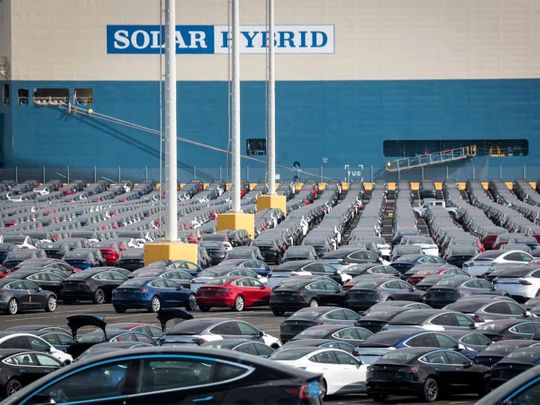
Dubai: Where are the charging points? Why are they too expensive? I can’t wait forever to get badly-needed spare parts.
For wanna-be electric vehicle (EV) owners, these are valid concerns, even turn-offs.
At the on-going Gitex Technology Week (it runs till October 10, 2019 at Dubai World Trade Centre) EVs, mobility and autonomous transport are making a big splash.
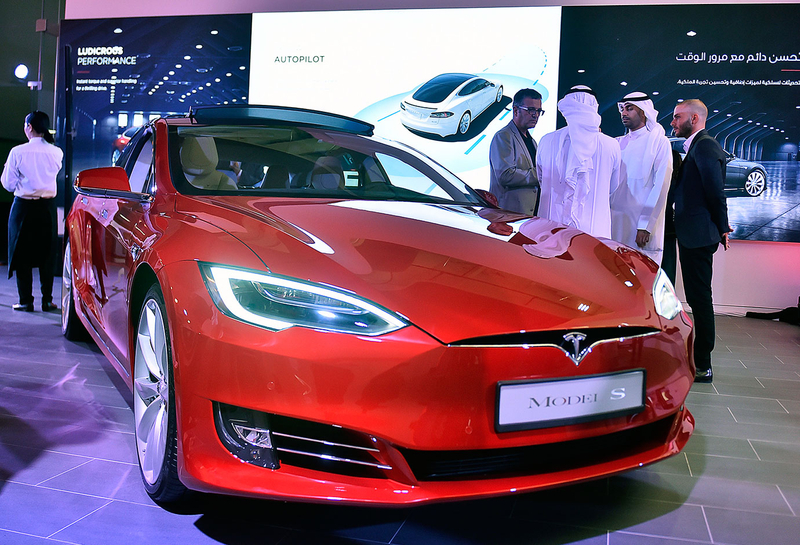
Gitex's Future Mobility programme explores innovations in self-driving, city-wide transport, e-scooters, mobility as a service.
They're signs of the times. Not only within the Gitex halls — but also in corporate boardrooms, under the hood, on the road. It's happening right here, right now.
Each day I drive on Dubai roads (about 20 minutes to work and back), I see maybe four or five EVs made by Tesla, the Apple of electric cars.
This is about to change. More affordable EVs are rolling off assembly lines, with really fun features — including Level 3/4 autonomous driving. Google's Waymo has reasonably achieved Level 4, a notch lower from Level 5 — at which point, your grandma or kids could simply push some buttons, ensure there's enough charge and they're good to go.
Level 1: Driver assistance (adaptive cruise control, breaks automatically when your car gets too close to another on a highway)
Level 2: Partial Automation (steering, acceleration assist, but driver must be ready to take control at all times)
Level 3: Conditional automation (Level 2 + vehicle controls itself, no human attention needed at speeds of 60 km/h [37 m/h] or higher)
Level 4: High automation (Level 3+ responding to events, determining when to change lanes and use signals; but car cannot tell difference between dynamic driving situations or a merge onto the highway)
Level 5: Complete automation (requires absolutely no human attention)
What's more, there are over 400 EV makers trying to outdo each other in China alone. EVs are objects of awe. And disgust. They're fun, but high priced (Dh560,070 for a Tesla Model S 2018 P100D in the UAE).
The perceived lack of public charging points is an issue. So is the lack of spare parts, especially outside America.
These are just teething problems. Stanford University futurist Dr Tony Seba argues that the coming "EV tsunami" is unstoppable, and could inundate key industries today. But also huge opportunities for those willing to embrace them. Sort of what online classifieds did to newspapers.
How soon will the EV wave sweep the globe? Or is it a massive multi-billion-dollar bubble about to burst?
China is a huge part of the story: There are now 486 EV manufacturers registered in the mainland, more than triple the number from 2017. Amidst the super-intense competition, many of them may go bust.
But here's the upside: The survivor — or survivors — of this ruthless internal competition in China could prove unbeatable on the global stage. It's like how Alibaba survived ruthless e-commerce contest at home, and now slugging it out in the world.
Dh 353,115
Price of a Tesla Model X 2019 90D in the UAEMeanwhile Tesla, currently the king of EVs from California, is about to start rolling out new Model 3s (maybe Model Ys too) from its Shanghai, China "gigafactory" before the end of 2019.
How soon will EVs take over our roads?
Estimates vary widely, from the low end to the high end of industry guess-timates.
In 2016, only 0.1% of the total vehicles sold were EVs. At the low-end of industry estimates, only 1 per cent of vehicles sold in the world will be EVs by 2040.
At the high end of estimates, EV industry analysts claim that as much as 50 per cent of car sales of 2040 will be EVs.
Dr Seba says estimates are only informed guesses. History, however, is a best teacher.
He cited, for example, that the transition from horses to cars for transport happened in just a few short years.
The same thing with smartphones. About 100 years later, in 2007, Apple’s iPhone kicked off a radical transition, leaving non-smart phones and market leaders then, like Nokia, to bite the dust.
So would EVs do to cars what electric trains (like the Dubai Metro) did to diesel or steam-powered trains?
Following are the reasons why we see EVs putting an awful lot of rubber on the road sooner than later:
1. Fuel efficiency, low ownership cost
Electricity is the most efficient fuel for transport — and that's why we have electric trains, including the Dubai Metro (world's longest driverless train system, Red Line at 52.1km).
At 10 kWh, it is equivalent to about 40 miles per gallon (17 km/litre), yet costs about a $1 (Dh3.68).
Electricity also happens to be the cleanest fuel to go from point A to B — as long as it is generated from a non-fossil fuel source.

Just as electric (and driverless) trains had pushed diesel or steam-powered trains to the land of Dodos, internal-combustion engines may be heading the same way.
It may not happen tomorrow.
And it’s true: With EVs, we still have to charge them often to cover long distances. However, today’s EVs with a range of 380km to 400km have become the “new normal” — and market winner. Anything less will be gutted.
Tesla, with a run rate of 7,000 cars a week from its California factory, is set to ramp it up to 10,000/week, beefed up by new assembly lines housed in tents.
That’s not to mention the thousands of vehicles from its upcoming China "gigafactory", set to start rolling out the first vehicles before 2019 is over.
With big money poured into battery research, a 1,000-km-range EV is just around the bend.
This is not to mention improvements in electronics and chemistry. Battery design life enough to cover 1 million kilometres will also cut the overall ownership cost of EVs.
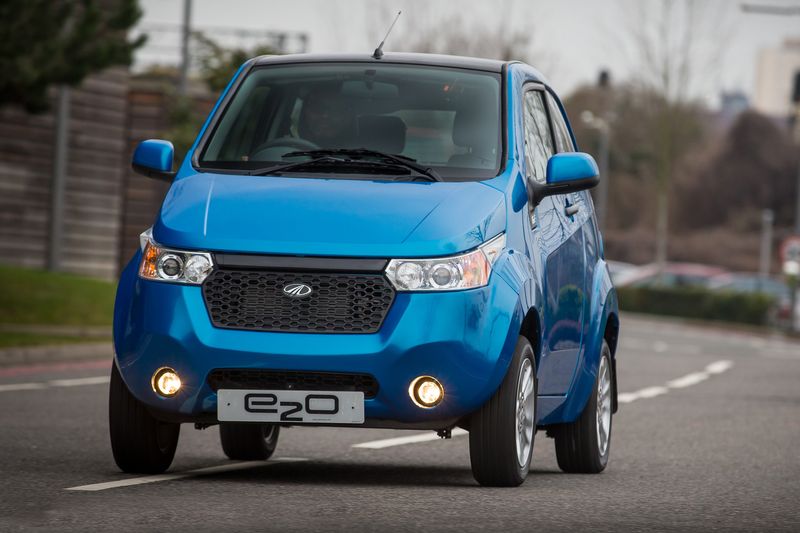
Typically, a Tesla costs about $40,000 (base-model Telsa Model 3 starts at $35,000). So the cost per kilometer reckoned over a 1-million-km life is about $3.5 per 100 kilometres.
$ 7,677
base price (Rs5.46 lakhs), of Mahindra E2O electric vehicleThat’s unbeatable anywhere.
With economies of scale, a decent $25,000 EV is not far from roll-out. In which case, the equation will be even better in favour of EVs.
2. Battery revolution + Convergence
Human ingenuity is limitless. Nearly 220 years since the Italian physicist Alessandro Volta unveiled the “voltaic pile”, the world’s first electric battery (in 1800), batteries have incredibly improved in performance.
Capitalism is the key driver: There's a high investor appetite and huge amount of human capital poured into research and development of batteries.
In the last 30 years or so, besides artificial intelligence (AI), no other technology has attracted so much attention from university researchers as much as EVs. Yet these two technologies reinforce each other.
The early exponential growth of products is called the "J-curve". The full technology adoption trend is called the "S-curve" (see illustration, below).
S-curve graphs document the historically radical adoption rates of technologies — from cars, to TVs, microwave ovens, the internet and mobile phones. Over time, they become so compelling (much better or cheaper) than existing products or services.
The result: A radically new purchasing behaviour, transforming markets in a very short period of time.
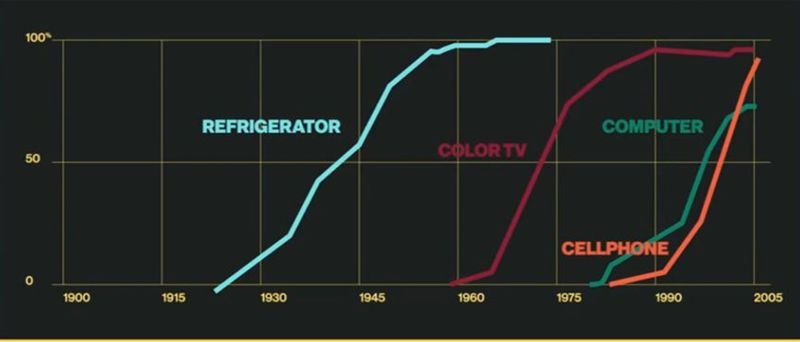
Today, the biggest draw in the battery sweepstakes is not personal electronics gear, like smartphones. Rather, it's EVs and grid-power storage, the type of batteries that power cities.
The numbers are quite mind-boggling: Since the early 1990s, more than 300,000 patents related to batteries had been published. Over 30,900 patents had been granted. Some 6,400 battery-related patents had already expired.
The Chinese, Japanese, Koreans and Americans are investing heavily in battery research, development and manufacturing. European regulators and companies, keen to move the needle, have made huge bets on renewables, too.
EVs, renewables, high-powered chips, apps, AI and proactive regulations are part of the same ecosystem, and potentially virtuous cycle.
3. Technology disrupts, market decides
Today, there are about 200 EVs used as airport limos in Dubai, a city which has about 200 public EV charging points.
Dubai is an early adopter. It offers generous incentives for EV owners. Many countries boost EV adoption through subsidies, including EU nations and China.
_resources1_16a4a1674d5_original-ratio.jpg)
$ 36,000
Base price of Hyundai Kona EV (top speed: range: 450km on one charge)From January to July 2019, China saw a 40.9 per cent spike in EV sales to a whopping 699,000 units from a year ago, data from the China Association of Automobile Manufacturers (CAAM) show.
In the US, Tesla Model 3, despite its high base price (average $38,990), has become the 6th best-selling car in Q3 2019. It sold 43,000 units, further eating into the market share of every leading sedan (priced at $12,000 to $15,000 less on average than Model 3s).
Government policy also plays a role: Some countries are embracing EVs sooner than others. Certain countries reward EV buyers with lavish incentives.
Norway is one example: In March 2014, one in every 100 passenger cars on the road was a plug-in electric in the Nordic country. The EV market surpassed 5 per cent in December 2016, and reached 10 per cent in October 2018.
In June 2019, electric vehicle sales in Norway was up by 87 per cent, when plug-in electric car registrations surged to the second-best result ever of 8,867 (up 11.2 per cent year-over-year).
Granted: The world, with its 7.53 billion people, is not Norway. But this awesome Nordic nation, a country with just 5.26 million inhabitants, could be a harbinger of things yet to come.
By 2030, the Dutch city of Amsterdam will ban all gasoline and diesel vehicles from the city. Other cities — from Paris and Madrid, Athens and Mexico City pledged in 2016 to ban diesel vehicles by 2025.
About a dozen countries and some 20 cities around the world have proposed banning the future sale of passenger vehicles powered by fossil fuels such as gasoline, LPG and diesel.

These include India, China (the largest auto market globally), Japan (the third-largest auto market globally) that has comprehensive plans for a “hydrogen economy” by 2040.
Also on list are South Korea, Taiwan, also the EU auto market nations of Denmark, Sweden, Norway, Germany, France, the Netherlands, Spain, and Portugal, as well as Costa Rica.
This 2019, London started imposing steep charges on vehicles in its city center that don't meet strict emissions standards. Several cities in Germany have already imposed restrictions on diesel vehicles.
4. Self-driving technology
Throw artificial intelligence (AI) and machine learning into the mix — eventually making self-driving EVs accessible to everyone — then EVs take us to a whole new world.
Add to this Moore’s Law (first described in 1965, in which computing capacity doubles two years, price remains the same, if not less), then you have something interesting going.
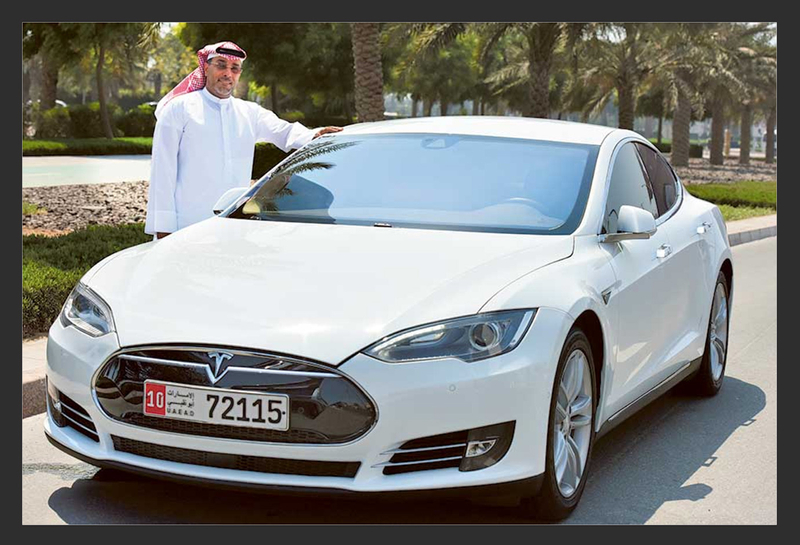
What you get is a virtuous cycle working together: With computing power key to self-driving system coming down in price, you're looking at a major disruption. It's due to the confluence of technologies.
The result: Intelligent cars fitted with number-crunching processors and intelligent cameras that enable them to be “trained” for self-driving functions.
On September 26, 2019, Tesla released Version 10, its biggest software update ever, which includes a whole suite of entertainment features and "Smart Summon" — enabling an owner's car to navigate a parking lot and come to them or their destination of choice, as long as their car is within their line of sight.
Self-driving technology system is already a reality. It can read faces, road signs, traffic lights. It can even record crimes, if it happens within the line of sight of its cameras.
5. Convenience — less charging, more driving
Battery chemistry is the holy grail of the EV industry as well as power storage. The existing set of battery cells (2170 format) has a rated power density of 247 Wh/kg.
Optimised with battery pack design and software, a range of 386km (on a single charge) has become the standard.
This can take you to Abu Dhabi from Dubai and back, on a single charge.
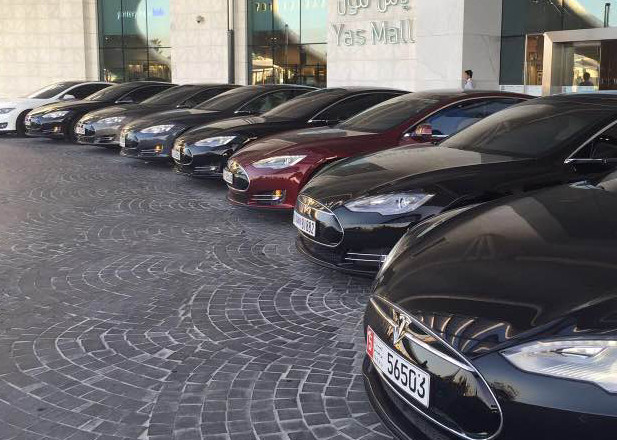
Using super-capacitors that would allow for quick charging (Tesla recently bought supercap manufacturer Maxwell), and dry battery electrode (DBE) technology, this would greatly improve the power packs.
And then there’s Dr John B. Goodenough, the inventor of lithium-ion batteries. He is is already 97-years old, but remains unstoppable. Dr Goodenough’s research team are developing new solid-state battery cells that could triple an electric vehicle’s range from what it is now — thereby cutting EV battery weight, or boosting range.
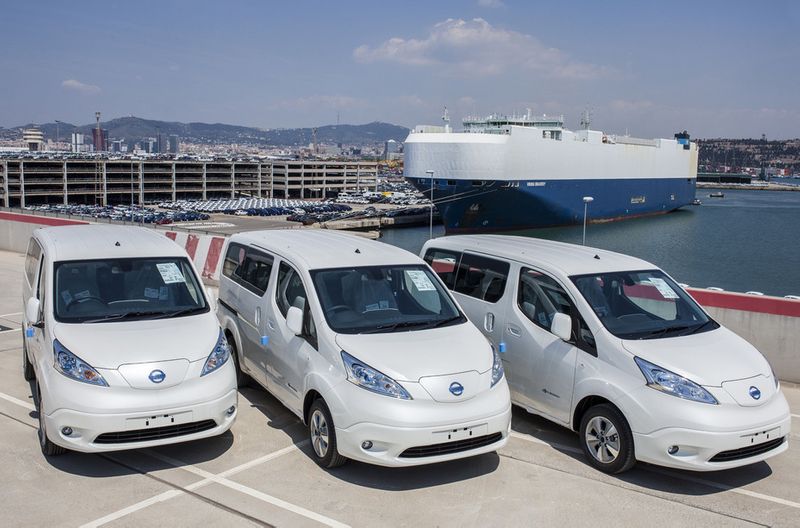
That’s just the kind of nudge that would take the EV market high above the clouds — with electric-powered aircraft.
6. Renewable power: For homes and cars
Renewable energy, though still in its infancy, is never inert. In April 2019, power from renewables accounted for 23 per cent of electricity generated in the US, surpassing coal at 20 per cent, according to the US Energy Information Administration.
Still, renewables face a big barrier: Power from the sun, water, wind and from underground (geothermal) — require a huge up-front cost. But this giant is about to wake up.
Think about pumped storage hydro-electric power (PSHE), which has an efficiency of up to 87 per cent, compared to the typical thermal efficiency of 37 per cent for coal- and gas-fired power plants, and 60 per cent for combined-cycle gas-fired plants.
Dubai’s Dh1.43-billion PSHE plant, now under construction in Hatta, is expected to generate 250MW of hydroelectric power. The Hatta project, a first of its kind project in the region, uses the latest design to optimise nature, with an 80-year design life.
Dubai's Clean Energy 2050 plan seeks to provide 75 per cent of Dubai’s total power output from clean energy by 2050. The Hatta project, due for completion in 2024, could be a new global model for state-owned renewable energy projects.
Irena, the Abu Dhabi-based International Renewable Energy Agency, has documented what it calls the global energy transformation — which has already 11 million jobs in 2018, most of which are currently in China, Brazil, US and India.
7. Capitalism at work
Innovation, coupled with the right amount of capital, drives economies of scale, and wider adoption of new technologies. Early in its life, Tesla was saved by a $50-million investment from Daimler.
In September 2018, Saudi Arabia’s Public Investment Fund (PIF) has become a strategic partner of Silicon Valley-based Lucid motors by investing more than $1 billion in the EV maker.
A PIF representative told Reuters then that investing in the electric vehicle market makes long-term sense. “PIF is gaining exposure to long-term growth opportunities, supporting innovation and technological development and driving revenue and sectoral diversification for the Kingdom of Saudi Arabia.” PIF, and other huge sovereign wealth funds, are also known to have invested tens of millions in Tesla.
In 2008, Warren Buffett invested in a little-known mobile phone battery maker in Shenzhen. Buffett’s holding firm Berkshire Hathaway, through its MidAmerican Energy arm, announced it was pumping $230 million into BYD, at HK$8 a share.
BYD, formed in 1995, was just on the verge of getting into EVs. Today, BYD has become China’s biggest EV maker, and saw its share price spiking 60 per cent in 2018. China cut back subsidies on EVs, leading to a slowdown in sales and decline in profit. Still, MidAmerican Energy’s BYD stake is now valued about 10x more.
Therefore, it must be asked: What does the future hold for EVs?
Today, there are many affordable brands of EVs already out there, most of them are priced under $40,000. It's not just Americans, Chinese and Europeans but also Indian manufacturers joining the EV drive.
It's not hard to imagine a moment in the near future when EV companies, governments — and the world market — figure out ways around the barriers, such as affordability and spare parts.
Battery-powered vehicles, in reality, are also a thing of beauty, able to beat ICE engines on Nürburgring track.
They good for your lungs, too: We all need more oxygen, and less CO2. The EV run is about to hit a tipping point. You could park your EV in your living room, even sleep next to it, and never worry about carbon monoxide poisoning. When power is out, you can use the EV battery for emergency home power.
When they do come of age, all of us can probably look back to 2019, and realise that service, spare parts and charging are just some teething problems. And that the EV tsunami wasn't so bad at all.








